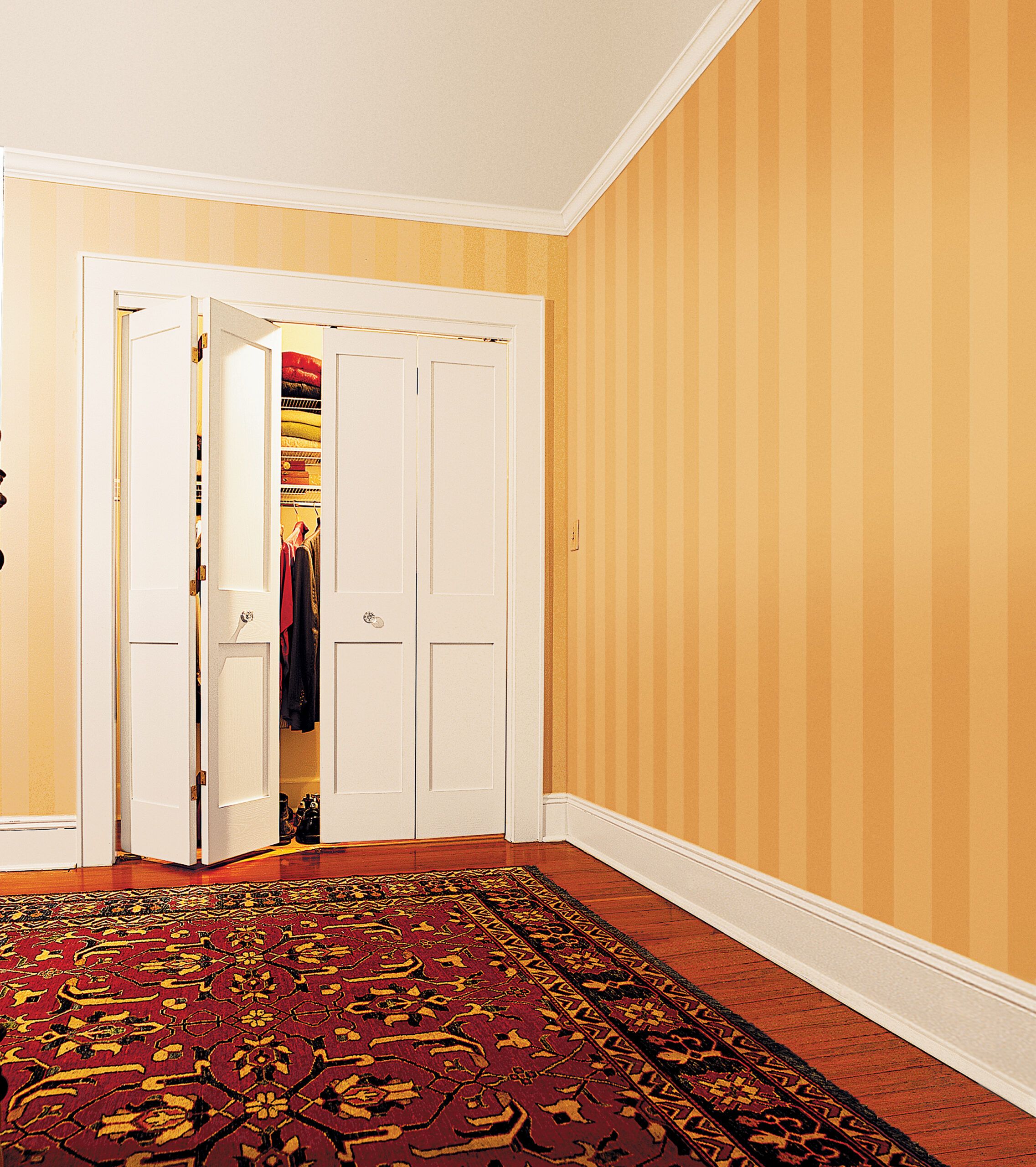Project details
Skill
Cost
Estimated Time
Bifold doors are hinged door panels that fold against each other when opened. They offer several advantages over traditional sliding doors, including better access to your closet’s contents.
Even a beginner can install bifold doors in a single afternoon, provided they have the right tools. This guide will walk you through each step of the process, from door selection to finishing touches.
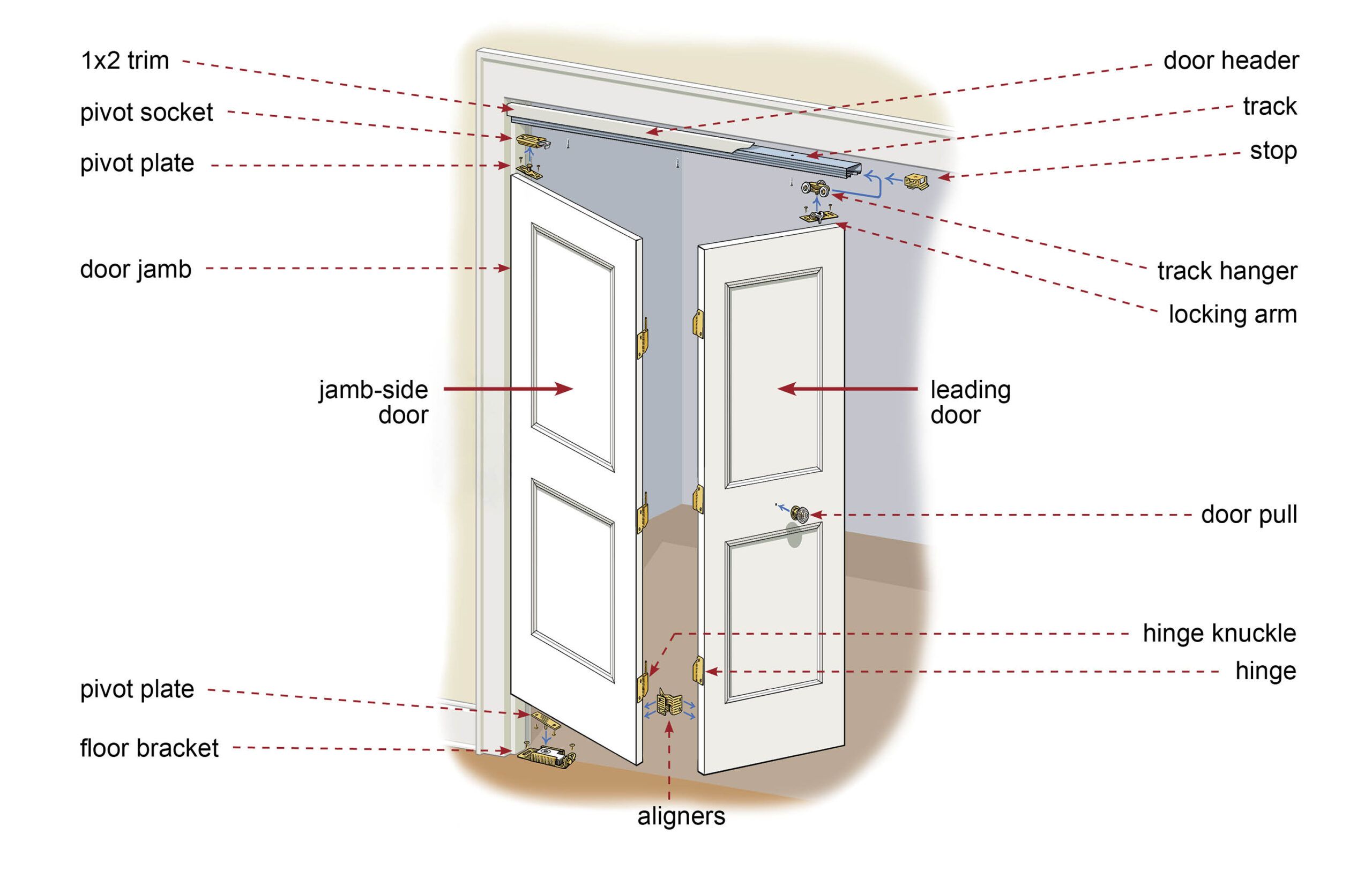
Picking the Right Bifold Door
When selecting bifold doors, the most important thing to get right is the size. If the door you pick doesn’t fit your closet opening, you’ll have trouble installing it.
Measure the opening framing at multiple points in your closet to account for any irregularities. It’s crucial to choose doors that are wide enough to cover the space and short enough to clear the floor when installed without leaving a major gap.
Types of Bifold Doors
Common bifold door materials and styles include:
- Solid wood: Offers durability and a classic look
- Medium-density fiberboard (MDF): Provides a smooth surface ideal for painting
- Louvered: Allows more air circulation, perfect for laundry areas
- Glass-paneled: Lets light through while maintaining privacy
The weight of your chosen doors impacts the type of hardware required. Compared to lighter MDF options, heavier solid wood doors need sturdier tracks and pivot mechanisms. In many cases, the bifold door you buy will come with the proper tracks — but double-check to make sure.
Now’s also the time to decide whether you need to paint the door. You can choose a pre-painted door, often a classic white. But if you need a different color, you’ll want to have the door painted before you install it.
Tools You’ll Need
 Combination square
Combination square Drill/driver
Drill/driver Centering bit
Centering bit Hacksaw
Hacksaw Plumb bob
Plumb bob Flexible bit extender
Flexible bit extender Handsaw
Handsaw
Installing Bifold Doors, Step By Step
With the right door selected and painted, you’re ready to install. Here are the steps you’ll take:
- Mount the hinges
- Attach the track hardware
- Install the track
- Position the floor bracket
- Hang the doors
- Attach the floor bracket
- Attach the door aligner
- Install the door pulls
Below, find our step-by-step guide with visuals to guide your installation.
Step 1: Mount the Hinges
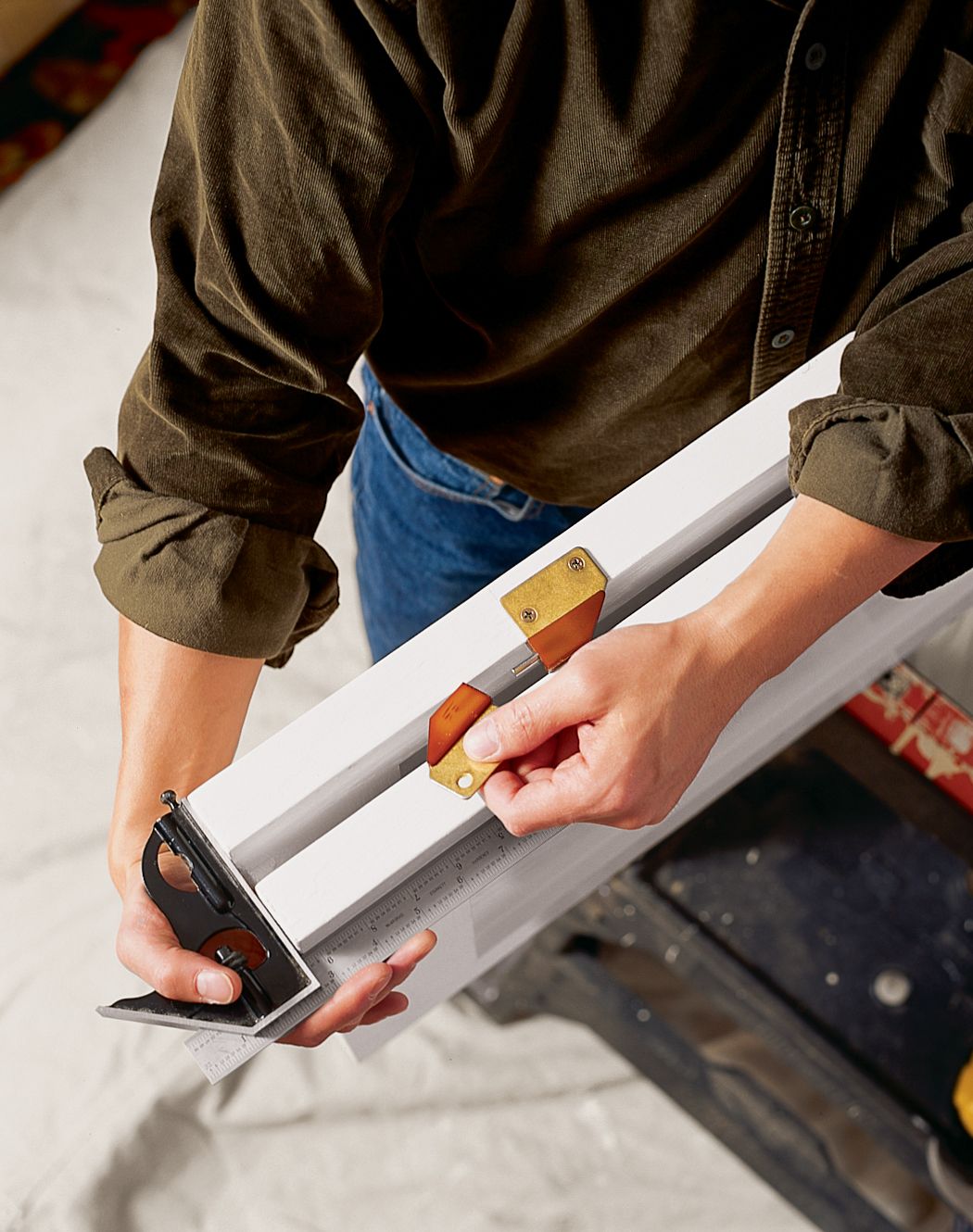
Take a jamb-side door and mark its inner edge 11 inches from the bottom, 7 inches from the top, and centered between the two. Place the door on its side with the marks facing up.
Take the lower half of a hinge and align its bottom with the bottom mark, its knuckles facing back and flush to the edge. Use a self-centering bit to drill pilot holes through the hinge holes. Screw on the hinge plate. Attach the top and middle hinges on their marks.
Place the leading (inner) door on its edge, facing back-to-back with the first door. Align the doors evenly against a square, then put the hinges together. Screw the hinge plates to the leading door. Repeat on the second pair of doors.
Step 2: Attach the Track Hardware
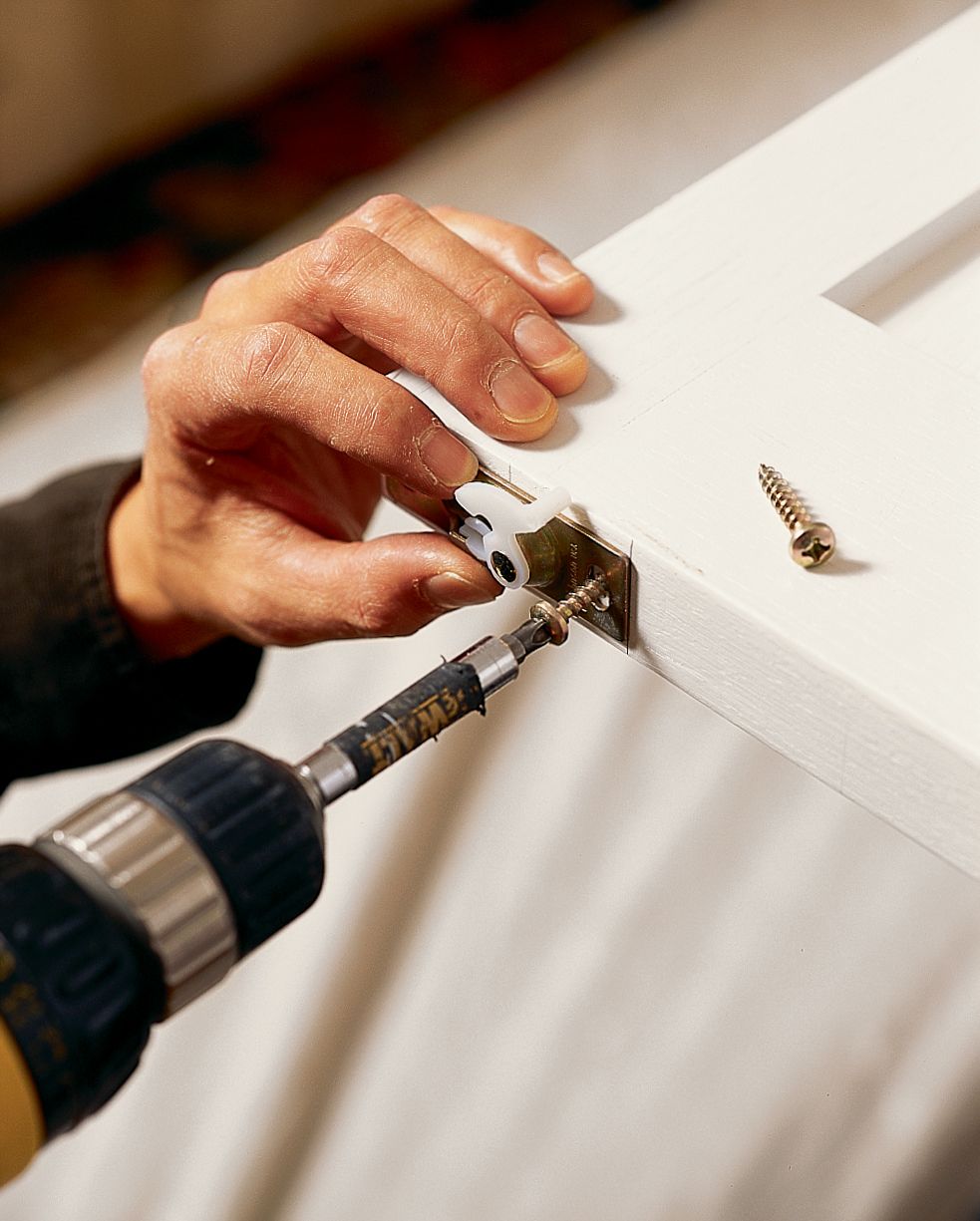
Fasten the pivot plates — the pins that fit into the track and the floor bracket — and the locking arms (the hooks that slide along the track) to the top and bottom of each set of doors. The pivot plates go on the tops and bottoms of the jamb-side doors, and the locking arm on the tops of the leading doors.
Each bifold door kit has its own requirements for hardware positioning, so check the diagrams that come with yours for exact measurements and placements. The instructions should explain how far a pivot plate and pin should be from the door’s edges. Adhering to all the given dimensions ensures that no piece is installed backward.
Step 3: Install the Track
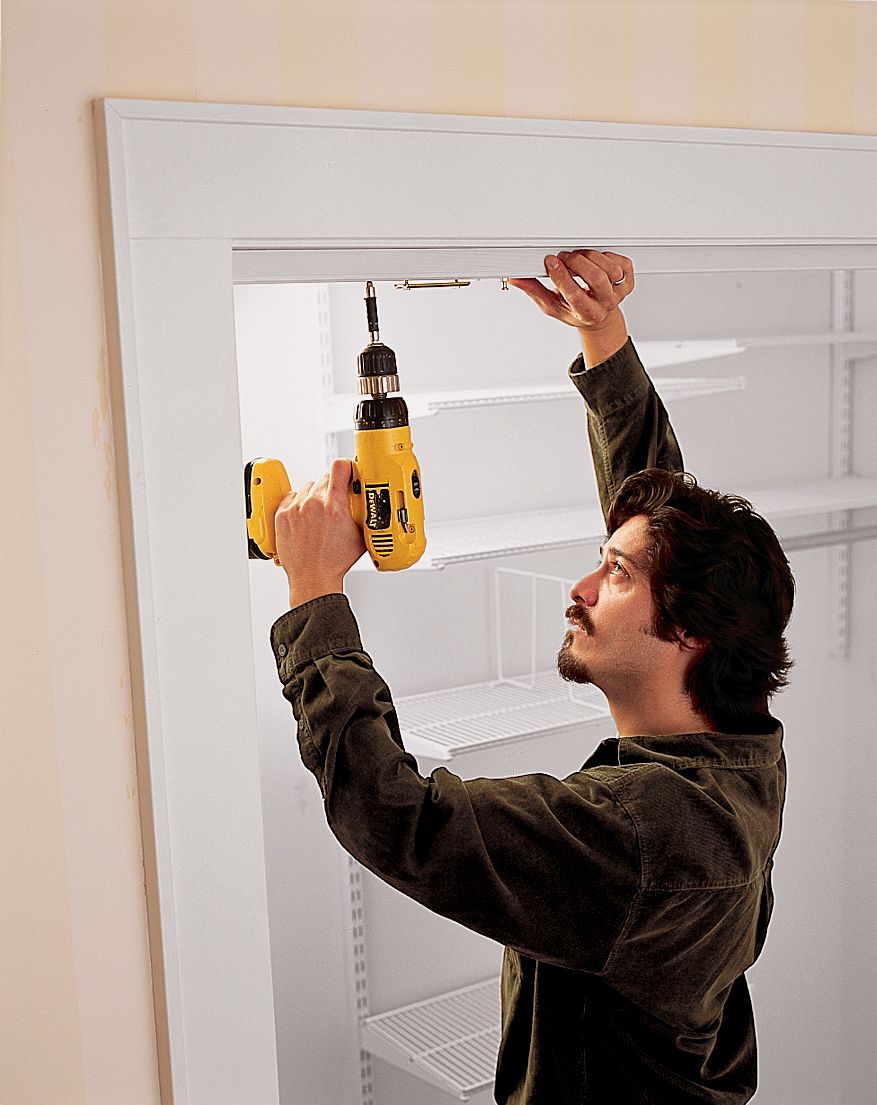
Use a hacksaw to cut the track to fit the closet opening. Slide the hanging hardware into the track, around the track hangers with wheels, and the pivot socket on the outside.
Attach the track to the door header with the screws provided. Position the track 1 inch from the front edge of the header. This will give you enough room to hide the track with trim without limiting the door action.
Tip: Don’t tighten the hardware onto the track. It will be easier to hang the doors later if the pieces are loose.
Step 4: Position the Floor Bracket
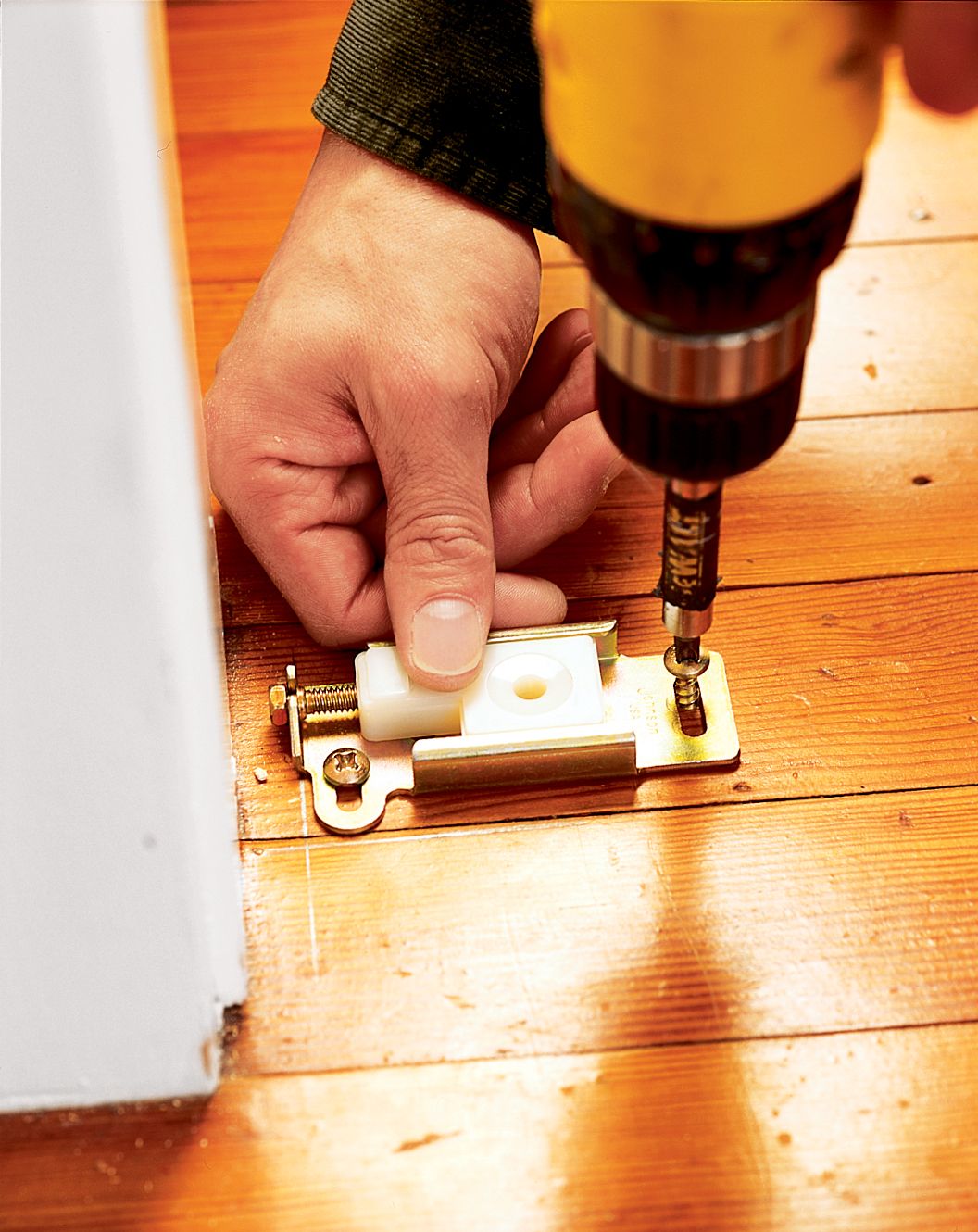
Use the measurements supplied by the manufacturer to position the floor bracket next to the door jamb.
Hang a plumb bob from the center of the track above the floor bracket to align the pinhole in the bracket front to back. This will ensure that the doors are plumb when installed. Outline the bracket in pencil to mark its exact location.
Screw the bracket in place, then remove the screws and set the bracket and screws aside.
Step 5: Hang the Doors
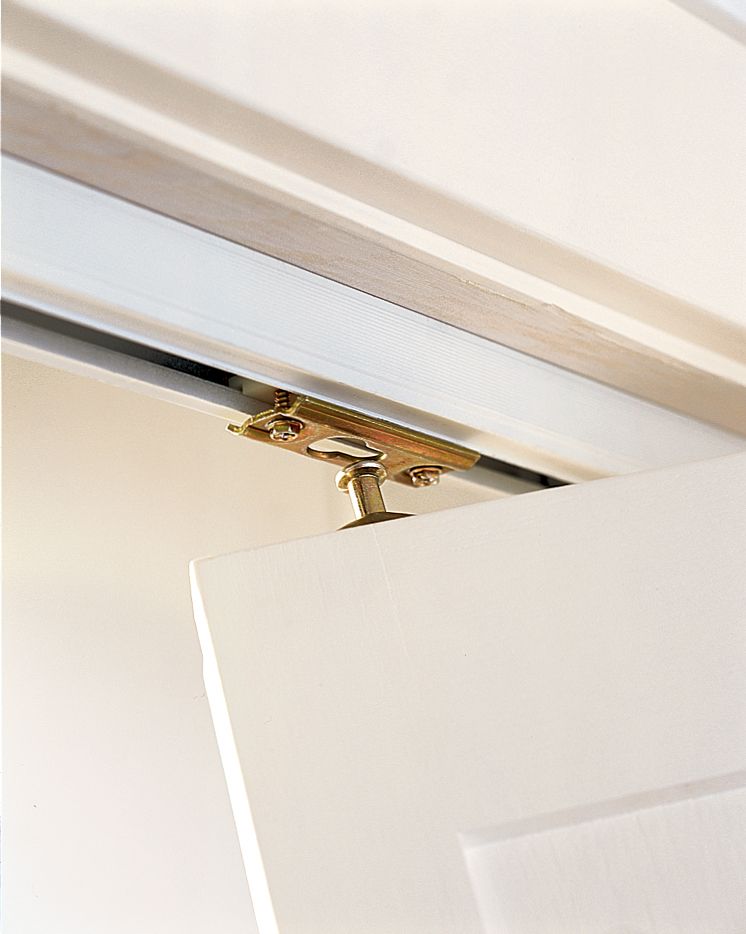
Bring the doors to the track and lift the jamb side to hook the pin of the top pivot plate into the pivot socket. Make sure the pin is all the way in, then push the lever on the side of the socket to lock it in place.
Slot the pin from the track hanger into the locking arm on the leading door. Twist the arm to lock it into place. With the doors closed, swing them forward enough to catch the floor bracket in the bottom pivot pin.
Step 6: Attach the Floor Bracket
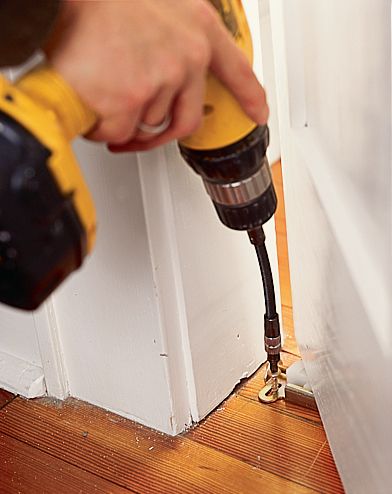
Swing the doors back into place and align the floor bracket with the pencil marks. Use a flexible bit extender to screw down the bracket.
Hang the other set of doors. Close both sets and adjust them along the track to even up the reveal around them. Then, using the wrench provided with the hardware, tighten the pivot sockets on the ends of the track and the small stops in the center.
Tip: Ask a helper to help you lift and hold the doors, which can be unwieldy.
Step 7: Attach the Door Aligner
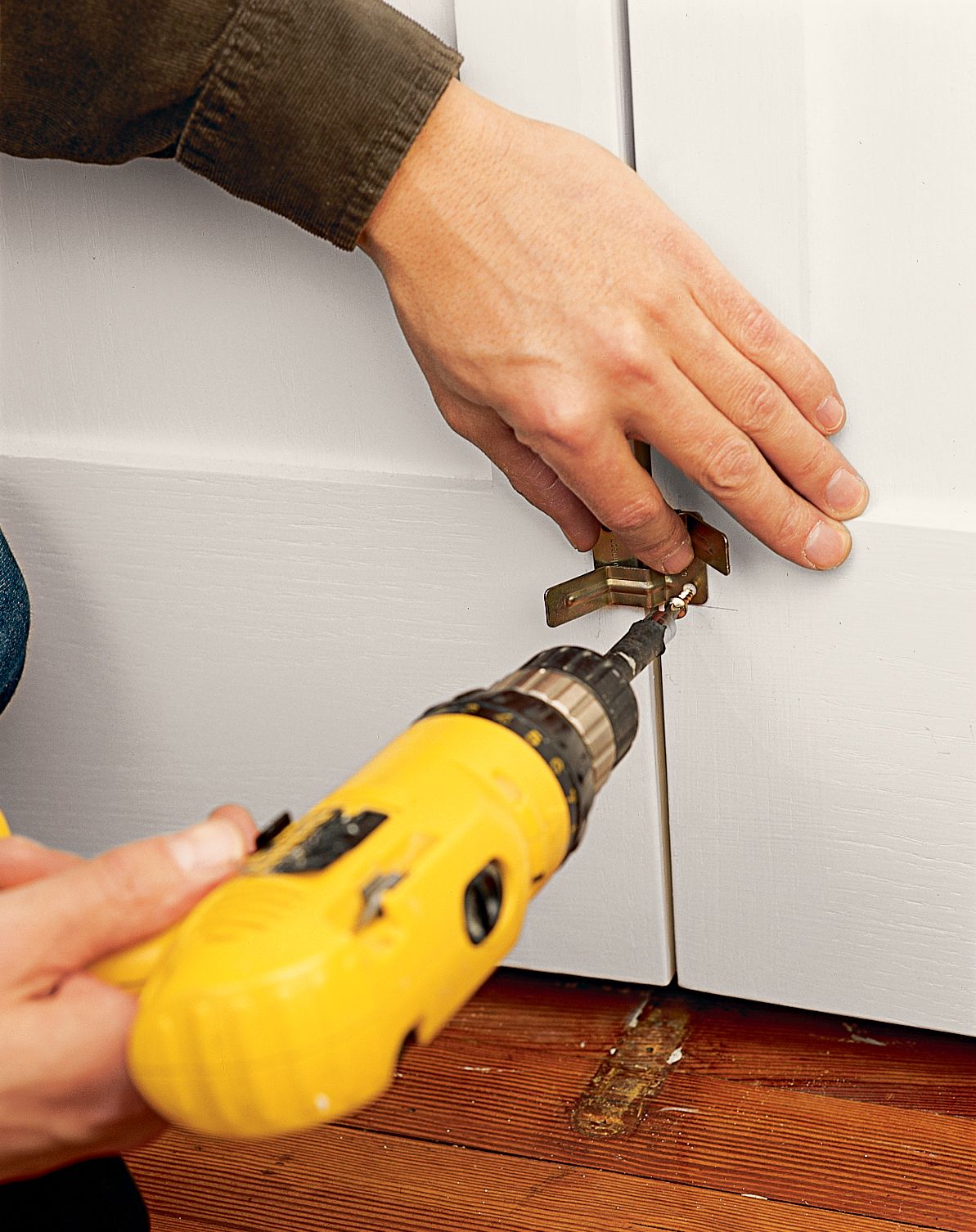
From inside the closet and with the doors closed, mount the door aligners between the two leading doors, 6 inches up from the floor. The aligners catch when the doors are closed, keeping the door faces flush with each other.
From outside the closet, check the alignment. Adjust the track hardware as necessary to keep the reveal around the doors even.
Step 8: Install the Door Pulls
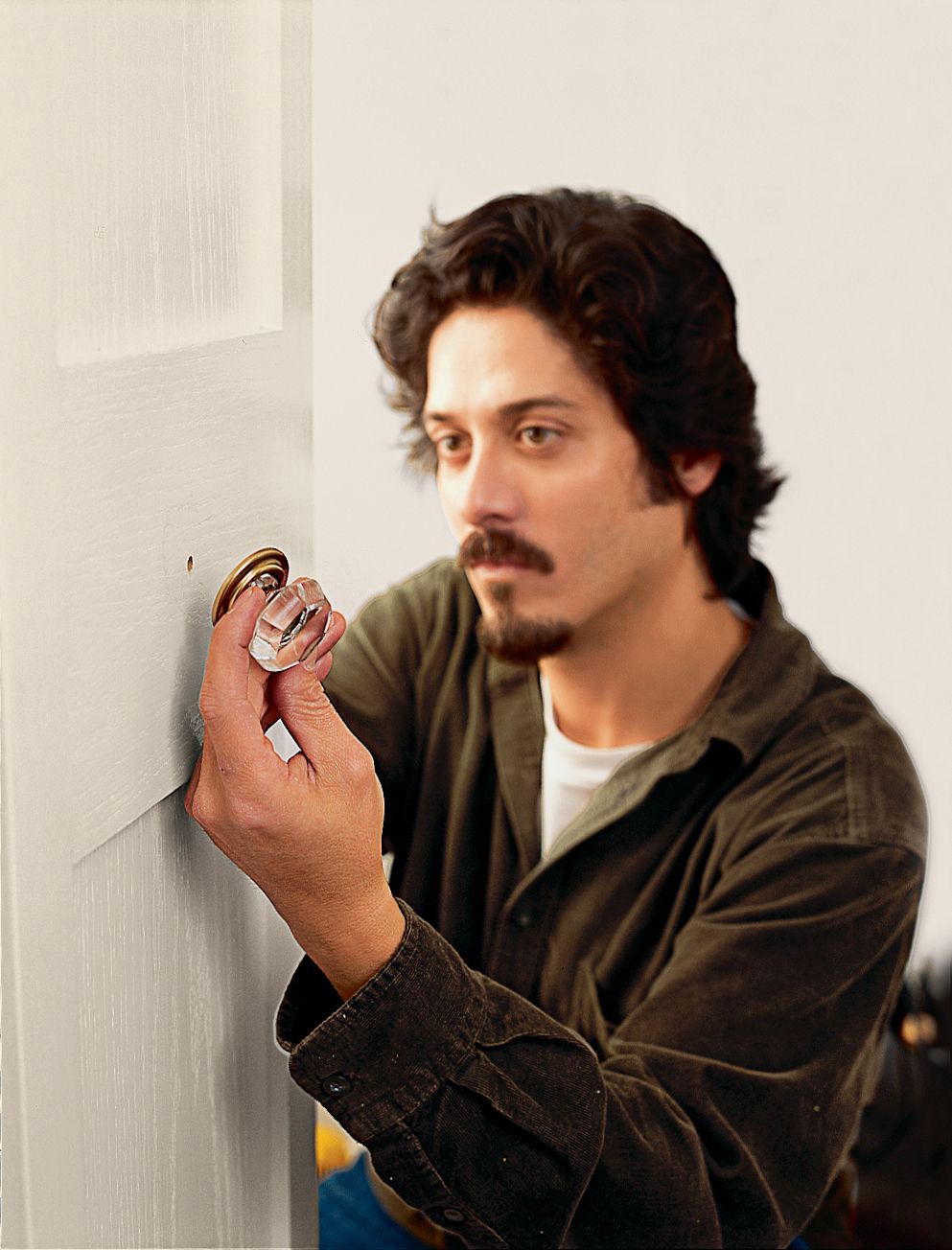
For flat doors, measure 36 inches from the floor on each leading door. Then mark the center, side-to-side, at that height. For paneled doors, find the center of the middle rail instead. Hold a straightedge diagonally from corner to corner on the rail, draw a line in the middle, then switch to the other diagonal and cross the line. The X marks the rail’s center.
Drill 3/16-inch holes at each mark and screw on the door pulls.
Cut a piece of 1×2 stock the width of the closet opening to conceal the track. Prime the trim and let it dry. Use a 1/16-inch bit to drill pilot holes through the underside of the trim into the header. Screw the trim to the header with 2½-inch trim screws. Fill the screw holes, then paint the trim to match the casing.
Common Bifold Door Installation Issues
Even with careful installation, you may encounter some issues. Here are solutions to common problems:
- Doors don’t close properly: Check the track alignment and adjust door positions as needed.
- Doors stick or drag: Check that floor brackets are correctly positioned and pivot pins are fully seated.
- Uneven gaps: Adjust the position of doors on the track and check that the opening is square.
Bifold Door Cost
A basic bifold door made with low-cost materials and a hollow core typically costs about $100 at big-box hardware stores. Depending on the material and design, the upper end of bifold door prices can reach $3,000 to $4,000.
Bifold doors made with MDF or particle board are generally less expensive. Heavier doors made from hardwood are more costly, especially if they have elaborate glass or decorative elements. Glass-paneled doors are generally in the midrange, $300–$600.
Our Conclusion
Installing bifold doors is a project that you can easily handle yourself. By following the steps in this guide, you can do a high-quality job in just a few hours, even if you’re a beginner.
Make sure to measure carefully when preparing for your project, choose the right materials, and install the hardware correctly. With a little effort and attention to detail, you can improve your closet access and enjoy a new look.
